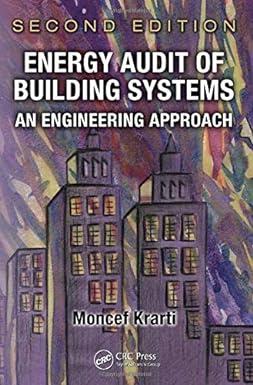Answered step by step
Verified Expert Solution
Question
1 Approved Answer
please help 41. An accounting rule (Financial Accounting Standards Board Rule 106) that addresses retiree benefits a. requires that firms establish accounting reserves for funding
please help 

41. An accounting rule (Financial Accounting Standards Board Rule 106) that addresses retiree benefits a. requires that firms establish accounting reserves for funding retiree health-care benefits. b. requires the employer to set aside a pool of funds that is at least 60 percent of health-care liability costs. c. permits employers to defer retiree health expenses to later years. d. permits health-care benefits to be paid out of the employers' current yearly income. 42. To prevent employees from making inappropriate benefits choices in a flexible benefits plan it is recommended that a. hourly employees not be offered flexible benefits. b. benefit flexibility be tied to employee seniority. c. the employees be required to select a core set of benefits. d. the HR department counsel employees in wise benefit selection. 43. During long-lasting economic declines, a. the number of weeks of unemployment offered to out-of-work individuals has to be cut to conserve the funds. (5. state unemployment compensation funds often become exhausted. c. the federal government has to step in to make unemployment compensation payments to jobless individuals. d. employers are often forced to stop their contributions to unemployment compensation funds because of financial losses. 44. As director of HR you need to calculate the return on investment of a new differential piece-rate system. To do this you need to calculate a. the dollar value of the increase in production divided by the cost of the new incentive system. (b) the dollar value of the additional production minus the cost of the new incentive system divided by the cost of the new incentive system c. the ratio of the cost of the old incentive system to the cost of the new incentive system multiplied by the dollar value of the increase in production. d. the ratio of the cost savings of the new incentive system compared with the return on investment which the shareholders expect. 45. James is a sales representative for a large international import/export firm. For the past three years James has received an annual bonus, the maximum possible, between $37,000 and $42,000 because he met his sales targets. This year, James is planning on using his bonus to buy a new car, so he and his wife have been test driving cars. Which of the following statements is most likely to be TRUE? a. The actual dollar amount of the bonus is less important to James than its "prestige" effect. (b.) James probably feels entitled to his anticipated bonus. c. The bonus system in this company does not pay out a sufficiently large bonus to motivate maximum effort. d. We can be fairly certain that James has exerted intense discretionary effort in the last four years. 46. Brian, the director of compensation, has been asked by the board of directors to present the "employee cos factor" at the next board meeting. Brian needs to do the following calculation: (a. total compensation and benefits divided by FTEs. b. revenue minus operating expense minus pay and benefits equal adjusted profit divided by pay and benefits. c. revenue minus operating expense minus pay and benefits equal adjusted profits divided by FTEs. d. total pay and benefits expenditures. 47. As director of HR you find that the amount of HR staff time absorbed in benefit administration is excessive. You are considering what benefit functions could be outsourced. Your first benefit area to consider outsourcing would be a. the Employee Assistance Plan. b. health benefits administration. c. calculating and monitoring employee paid-time-off and FMLA leaves. d. employee benefit education and communication. 48. Susan, the president of the school board for a rural school district, is interested in implementing a pay-for-performance compensation system in the school. The school board has called you in as an expert in incentive compensation to explore this option. You tell Susan that a. teachers' unions usually support the idea of pay-for-performance because it increases teacher pay which is usually low. b. a teacher pay-for-performance system rarely works unless the teachers are involved in the design of the system. c. pay-for-performance is not appropriate for publio sector cmployees. d. improvements in student test scores are a non-controversial measure of teacher performance. 49. For employers, all the following are advantages to consumer-driven health plans EXCEPT a. employees are well-prepared to make decisions about how to spend their health-care dollars. b. health-care usage rates typically fall significantly. c. employees use these funds for preventive health care thus lowering the overall insurance costs for the employer. d. employer contributions to the plans usually do not rise as fast as health-care costs. 50. A is a managed care approach that provides health services to an organization's cmployees for a fixed period on a prepaid basis. a. public/private health organization (PPH) (b.) health maintenance organization (HMO) c. preferred provider organization (PPO) d. contractual medical organization (CMO) 

Step by Step Solution
There are 3 Steps involved in it
Step: 1

Get Instant Access to Expert-Tailored Solutions
See step-by-step solutions with expert insights and AI powered tools for academic success
Step: 2

Step: 3

Ace Your Homework with AI
Get the answers you need in no time with our AI-driven, step-by-step assistance
Get Started


